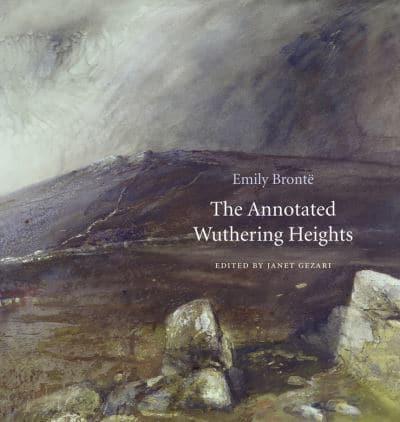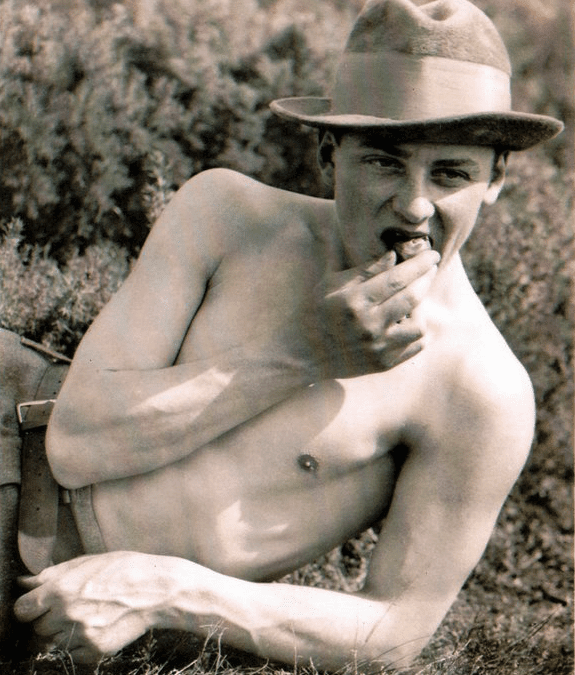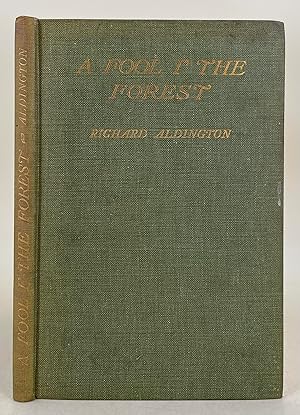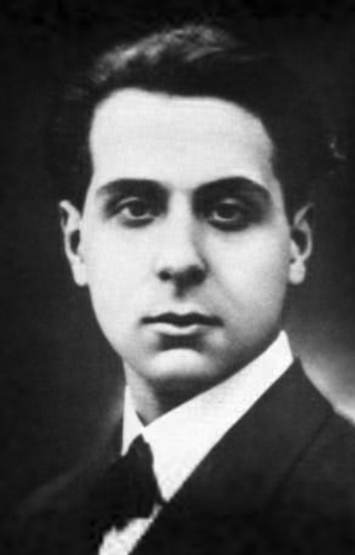This review appeared in Essays in Criticism (2016) 66 (3): 383-389
The Annotated Wuthering Heights. Edited by Janet Gezari. The Belknap Press, Harvard (2014); $35.
A high tribute to a great novel, which only queasily accepts it
Wuthering Heights has undergone many transformations since its birth as two volumes in 1847. Alongside it came its spiritual inverse Agnes Grey – and together they have frequently appeared again, both as a three-volume set and as a single volume, until as late as 1949. But from the 1880s Wuthering Heights also started appearing in complete sets of the Brontë novels. Only since 1900 has it habitually appeared alone – and, since the 1930s, often in soft, kitsch, covers. This kitsch, intensified and self-conscious, was extended to the text itself in various graphic versions from the 1990s onwards. Then in 2014, as though in remorse at that loss of dignity, it reappeared as a coffee-table book: nine by ten inches and over an inch thick, as well-made as any of the nineteenth-century editions (short of being leather-bound), and easier to read than most of them. The inverse of an e-book, The Annotated Wuthering Heights is defiantly an object, a tombstone, or an eternal rock beneath – a source of much visible delight, but … Well, if not necessary, then well-educated, useful, beautiful, and due to remain around for decades to come – like Catherine Heathcliff by the ending of the novel.
Harvard’s Belknap Press has been fitting out other novels similarly. This time the novel’s company is not Agnes Grey, nor other novels of the Brontë sisters, but Frankenstein, Little Women, The Wind in the Willows, The Picture of Dorian Gray, The Importance of Being Earnest, The Origin of Species, The Declaration of Independence, Alfred Russel Wallace’s notebooks On the Organic Law of Change, collections of Emerson, Poe, and Lincoln – and almost everything that Jane Austen wrote. The eclecticism recalls that of the Folio Society, which has a similar emphasis on good bindings, fonts and paper.
But, far more than Folio, this series has scholarly intention. The editor of Wuthering Heights, Janet Gezari, is Lucretia L. Allyn Professor of Literatures in English at Connecticut College. She has written extensively on the Brontës, as well as more recent literature, and has edited Emily’s poems and Charlotte’s Shirley, introduced selected letters of Charlotte, and published one monograph each on Charlotte and Emily in 1992 and 2007 respectively. Her brief introduction gives biographical information about the circumstances of the novel’s composition, before summarising Brontë’s efforts to get it published, its initial reception, subsequent editions, subsequent reception, and adaptations to other media including film. She provides a family tree (as have many editors of the novel, responsive to the bewildering convolutions of the characters’ names), and also a map of the novel’s territory (which few editors have done). This last is especially revealing. It makes it clear, for example, that the Kirk in which the protagonists are eventually buried is somewhat closer to the Heights than the Grange, near – not quite on – the way between them, and some distance outside Gimmerton village. The end of the book reproduces Currer Bell’s editor’s preface to the 1850 second edition of the novel (which tried to salvage Emily’s reputation and that of the novel itself), and also her 1850 Biographical Notice of Ellis and Acton Bell. These are appropriate, if limited, inclusions; this is not a Norton edition.
The text is based on that of the 1847 edition as published by Thomas Cautley Newby, and (nominally) retains its division into two volumes. This choice of base-text contrasts with that of most subsequent editions, which have followed the two-volume second edition edited by Charlotte Brontë in 1850. The Newby version is not perfect; it almost certainly does not represent Brontë’s final intentions, since there is evidence that Newby ignored Brontë’s proof corrections, and that typesetters added commas (more frequently-used points of punctuation then than now) at whim. Whether attributable to Emily or not, there are missing words and letters, variable fonts, and inconsistent spellings. Gezari has tried to reconstruct neither the manuscript of the novel, nor Emily’s final wishes concerning this – but nor, on the other hand, has she cleaved to Newby’s edition wholly: ‘In this edition, obvious typographical errors have been corrected silently’ (major such changes are noted in annotations, and some commas have been silently removed for clarity). For the dialect, of which the spelling was highly irregular in the 1847 text, Gezari has instated the versions provided by K.M. Prtyt, an expert on West Yorkshire dialect, for the 1976 Clarendon Press edition. The main features that will read differently to a reader familiar with other texts of this novel are the original (if regularised) spellings, shorter paragraphs, more dashes, and more exclamation marks. As Gezari points out, these differences in punctuation fit the fact that this is an excitable, and (in Nelly’s if not Lockwood’s account) a spoken, text.
Next to the text, and taking up rather more than the outer half of each page, are notes and illustrations. The former vary in length from a few lines to a few pages, and include renderings of Joseph’s Yorkshire dialect into standard modern English, observations about distances and dates, reminders of who minor characters are, elucidations of references to or echoes of the Bible, Shakespeare, Tennyson, and other works read by Brontë, comparisons of portions of the text to other works by Brontë including her poems, comparisons to works by her sisters, glosses of terms, information on such historical subjects as inheritance laws, observations on such subjects as class, and discussions of such conundra as whether Heathcliff is Irish. There are some excurses into literary theory: Gezari asserts the relevance of Bataille’s ideas about ‘the basis of sexual effusion’ to Catherine and Heathcliff’s last meeting, ‘which puts Brontë into the company of Baudelaire, Blake, Sade, and Genet.’ Catherine’s assertion ‘Nelly, I am Heathcliff’ is attended by an extended discussion of self-identification with others as discussed by various authors over time. The notes are conscious of giving a superior vantage point to that of, for example, Nelly: after asserting that the dying Catherine’s recollection of Heathcliff’s trapping a lapwing nest years before indicates her uncertainty about her remaining power over him, Gezari states that this is ‘one of Brontë’s clearest representations of Catherine’s tortured unconscious, revealed to us in ravings that Nelly is unable to interpret.’
A number of the notes seem directed at non-Britons, which is unsurprising, given the American publisher. Information is repeated for the benefit of those not reading the novel straight through. One of the most helpful services offered by the notes, at least to this British reader, is to accentuate the novel’s chronology and its characters’ ages. Now that, in Western societies, the process of growing to full adult power, possession, and responsibility is taking ever longer; that marriages are made later if at all; that families are started later if at all; that homes are bought later if at all; that durable careers are started later if at all; that retirement is pushed into later life, as is death; and that forty is the new thirty, fifty the new forty, and so on – it is striking to be reminded how much English society has changed in this respect since 1847 or 1801. Today a female eighteen-year-old is a girl just ready for her gap-year, university, or first job. The eighteen-year-old Catherine Linton is the lady of a house, a wife, a mother, and dead. The twenty-seven-year-old landowner Hindley dies of decrepitude. The forty-four year old Nelly calls herself an old woman. One is reminded that novels of the nineteenth century are overwhelmingly concerned with the doings of what we now call teenagers, or with those in their very early twenties – categories of people now described in what we would think of as literature about children. We now have more life – in terms of bulk – but in profound senses we also do our living at a far more leisurely pace.
The illustrations serve similar functions to the notes which they intersperse. They visually glimpse the reality of the world in which the novel was born and/or to which it referred, including clipper ships in Liverpool Harbour in 1810, and trains running between Liverpool and Manchester in 1831. There are modern photographs of period dress, of locations such as Top Withens, and of possessions and productions of Brontë such as the portable sloping desk on which she wrote Wuthering Heights, and her painting of her mastiff-cross dog ‘Keeper – from life, 1838’. Of course, since many of the illustrations are themselves paintings, they are both art and artifact, evidence and interpretation. Illustrations of previous editions of the novel, and stills from its film adaptations, serve both as decoration and historical elucidation – though the former role is clearly emphasised in the book’s frontispiece, a reproduction of one of Clare Leighton’s woodcuts for the 1931 Random House edition. In that role, presumably, it is meant more to delight than to inform the reader – though it is questionable how many of the novel’s admirers its high-blown art deco romanticism will in fact please. It is more likely that the dust jacket’s reproduction of Philip Steven’s sublimely dark 1995 painting of uplands, Grimspound II, will do so – and certainly it enhances the impression that the book is in fact a slab of rock.
Not all of the interpretative notes are unquestionable. For example, it is argued that when Edgar reproaches Catherine for ‘welcoming a runaway servant as a brother’, Brontë but not Edgar is alluding to Wedgwood’s abolitionist conjuncture of slave and brother in his 1787 slogan ‘Am I not a man and a brother?’, and that therefore, ‘On this occasion, Edgar’s unwitting allusion to slavery suggests his isolation from the powerful storms shaking the world outside Thrushcross Grange and its correspondence to his unwillingness to acknowledge the powerful storms shaking the foundations of his marriage.’ How much one thinks that the idea of slavery coloured Brontë’s mind when writing this scene will in part depend on one’s assumptions about Heathcliff’s origins – but even assuming a generous colouring, the rhetoric of the scene and of the novel as a whole do not represent Edgar as out of touch with his times. And, even if they did, his disconnection from the contemporary world of, for example, Lockwood, would not mirror or evoke his disconnection from the passional world of, for example, his wife.
In common with other editions of and commentaries about the novel, the difference between Joseph’s dialect, and the English used by the other characters, is discussed explicitly – whereas the question of the accents with which the other characters would speak their standard English is hardly discussed at all (with the one exception of noting that ‘Wuthering’ would have been pronounced with an ‘oo’ as in ‘wool’ by all of its inhabitants). Costume dramas, as made by the English, nearly all make two errors. They make the mothers of heroines too old, and they give to everyone who is not of servant class Received Pronunciation. The latter point has applied to most adaptations of Wuthering Heights, with the striking exception of the 2012 Andrea Arnold version, which at least gave all the inhabitants of the Heights, if not of the Grange, Yorkshire accents. And yet all the characters other than Lockwood should have had a Yorkshire accent, with the possible exception of Heathcliff, who went through a crucial stage of his late childhood and early adulthood elsewhere.
Beyond such cavils, there is a more fundamental problem in the very concept of an annotated edition of this novel. The most assiduous historical scholarship, and most sophisticated applications of ideologically-, linguistically-, or philosophically-inflected theories to Wuthering Heights, have failed to convincingly present it as anything other than a profoundly untamed beast of a work of imagination. As such, it resists presentation as what could serve as a coffee-table book more than most novels, and notably less than the other works in Belknap Press’s series, whatever may be the savagery of Jane Austen’s irony. Certainly, as Gezari’s Introduction notes, ‘Wuthering Heights is a tale told by the fire, and most of the action in the novel takes place indoors’, and ‘Emily Brontë clipped and saved five reviews of Wuthering Heights [therefore] Wuthering Heights is the expression of a supremely independent but not isolated mind. Brontë’s determination to publish it is a warrant of her ambitious hope that it would find a fit audience.’ Yet, as Gezari also admits, nature is no metaphor in the novel. And Brontë was uncompromising in what she offered to the ‘fit audience’ she sought.
Lockwood is there to help make the readers more fit, and his (and Isabella’s, and to a far smaller degree Nelly’s) failures of perception and empathy are intended to help the reader avoid replicating them. For example, Isabella’s fatal attraction to Heathcliff as a ‘piece of rough’ instructs female readers who might be inclined to respond to Heathcliff similarly. But the degrees of distance between Lockwood’s ignorance at any given point of narrated time, and the reader’s ignorance, is carefully calibrated. Annotations destroy this calibration. At the novel’s opening both Lockwood, and the reader, stumble forwards in interpreting the household at Wuthering Heights, with the crucial difference that only we do it from the comfort of an armchair, from which Lockwood in his turn is retelling the whole to us; annotations distance us from the action still further. Where Lockwood, or Nelly, ejaculates a moral judgment, or desire, that is contradicted by the contents of their narration, this effect is intentional. The effect of a supplementary annotator is not. Not only does the novel’s opening word, 1801, get a footnote, but so do the ‘hare-bells’ of the concluding paragraph. Here the annotator, Lockwood-like, springs forth with: ‘Lockwood is seeing bluebells (Campanula rotundifolia), which are sometimes called hare-bells, not wild hyacinths. Bluebells are much more common than hare-bells in the north of England and Scotland. Brontë wrote a poem about them, and Nelly urged Cathy to gather them to bring to her father when she hoped to raise her spirits.’ If The Annotated Wuthering Heights is not quite a scholarly edition, it also does not on the other hand have the tact to give the reader a clear run at the novel’s powerful last paragraph. Lockwood’s own gloss of ‘Wuthering’ as ‘a significant provincial adjective, descriptive of the atmospheric tumult to which its station is exposed, in stormy weather’ is amplified by further observations on the term. Understandably, given its genre, this edition does not self-consciously observe that marginal notes are not only crucial to its own metcrucial but to one of its most famous scenes. Of course, Catherine’s notes are not annotations to her religious texts, but signs of her resistance to what they contain, in the forms of a caricature of Joseph and her own diary. One cannot expect such a spirit of rebellion on the part of an editor.
This edition is a gift to those who wish their Joseph to be comprehensible, and their Wuthering Heights to be a beautiful, formidable physical object. The Brontë who wished to get this novel into print would be happy at this sign of its endurance and power. But, more than with most works of literature, Wuthering Heights, like Heathcliff, disdains handmaids. A rereading of the novel, in this edition, reminds us of the fact.




